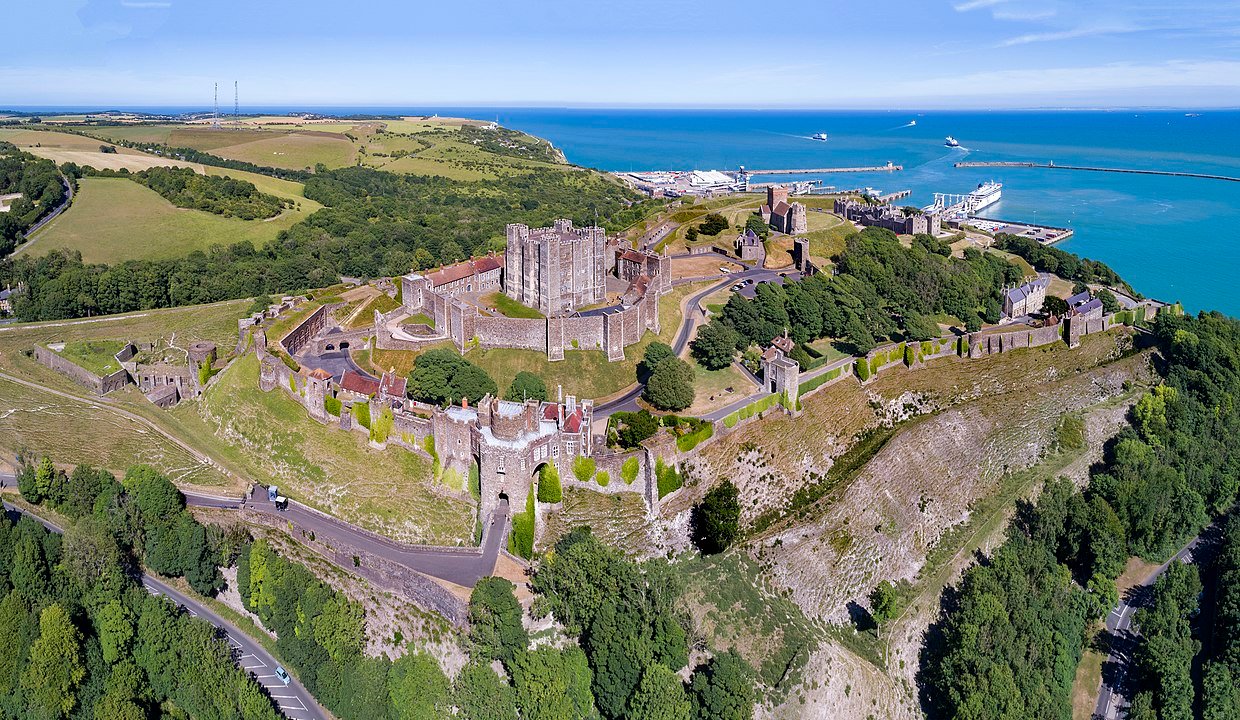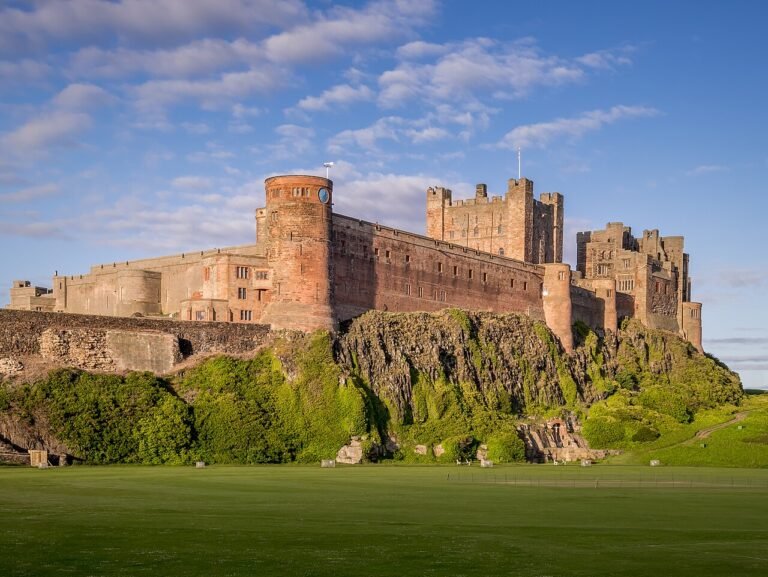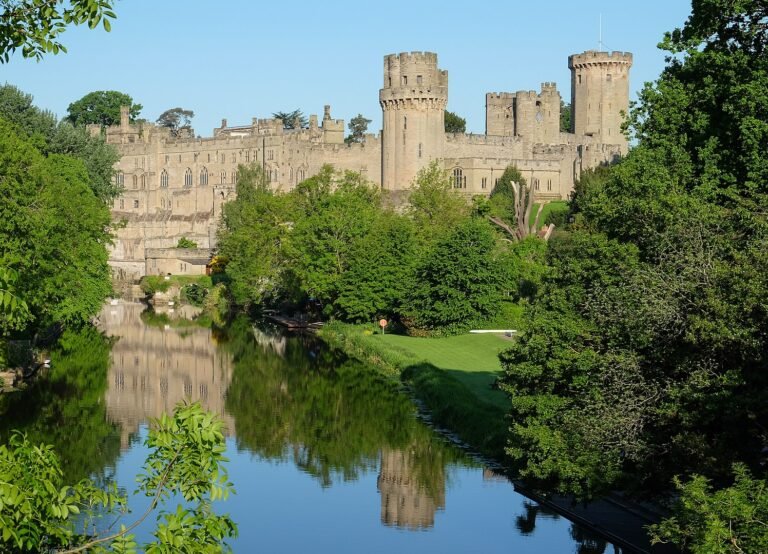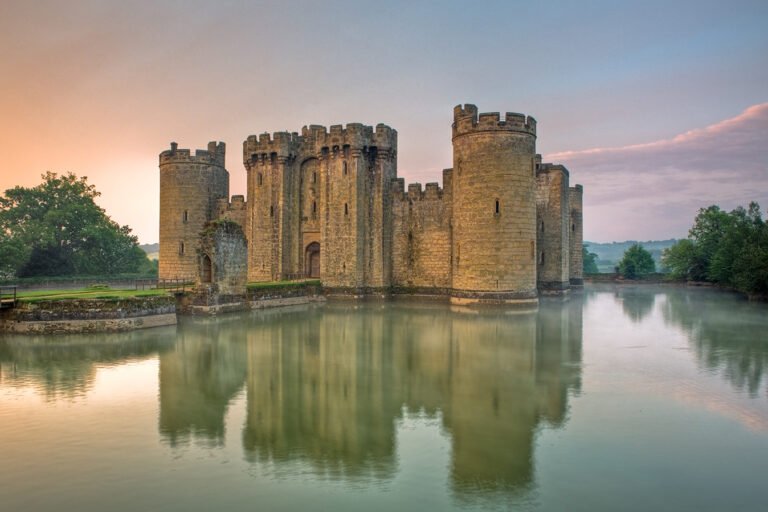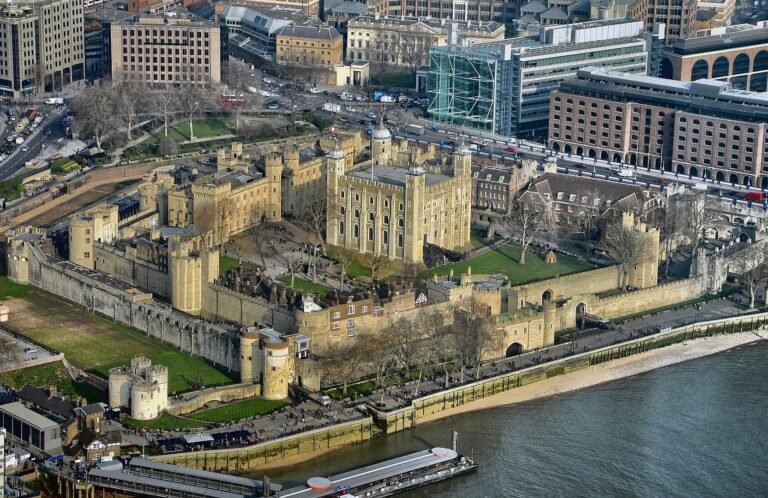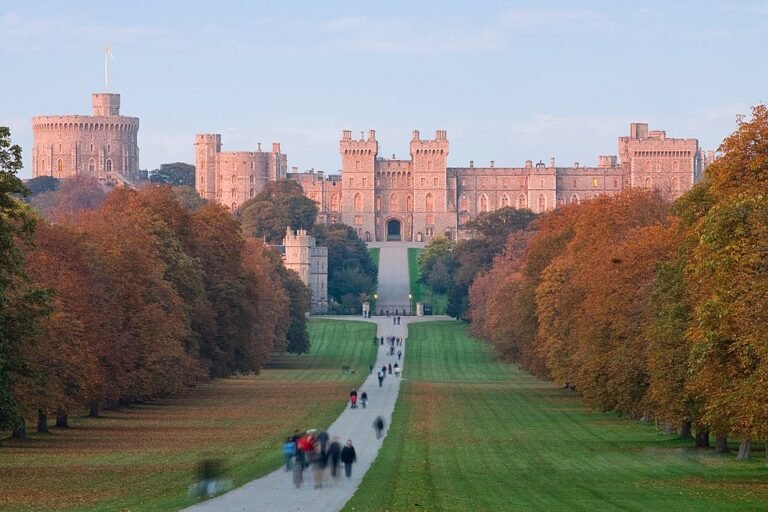Dover Castle: A Towering Chronicle of England’s Past and Present
Dover Castle: Commanding the White Cliffs of Dover with stately grandeur, Dover Castle is more than a medieval fortress it is a living chronicle of Britain’s national story. For nearly two millennia, this sprawling site has served as a Roman beacon, royal residence, wartime nerve centre, and symbol of enduring defence. Whether you’re a family seeking hands-on history, a couple tracing royal footsteps, or a solo adventurer fascinated by military ingenuity, Dover Castle offers a multi-layered journey unlike any other UK heritage site.
A Storied Fortress from Roman Roots to Royal Ambitions
Long before battlements graced its chalky ridges, the site now known as Dover Castle bore the marks of ancient defences. It’s believed that Iron Age tribes first recognised the strategic value of this elevated ground. The Romans, too, saw its promise, erecting a lighthouse, the Roman Pharos, which still stands today as one of the oldest surviving structures in Britain.
In the 11th century, William the Conqueror established a motte-and-bailey fortification here shortly after the Norman invasion. But it was Henry II, in the 1180s, who gave Dover its iconic form, commissioning the Great Tower not just as a military outpost but as a political statement of his authority. Lavishly appointed chambers and regal halls reflected a king eager to impress, especially visiting dignitaries from continental Europe.
Fortress of Many Eras: From Medieval Siege to WWII Stronghold
Dover Castle has been at the heart of numerous conflicts. It endured a brutal siege in 1216 during the First Barons’ War, when French forces tried, and failed, to breach its curtain walls. The castle’s defences were adapted again in Tudor times, with Henry VIII fortifying its walls to withstand artillery.
Its most dramatic transformation, however, came in the 18th and 20th centuries. During the Napoleonic Wars, engineers carved intricate tunnels into the chalk cliffs, which later gained renewed significance in World War II. It was from these subterranean halls that Operation Dynamo, the Dunkirk evacuation, was masterminded. Visitors today can explore these underground command centres, vividly brought to life with soundscapes, projections, and preserved wartime artefacts.
Facts & Figures: Why Dover Castle Stands Apart
- Location: Dover, Kent, South East England
- Construction: 11th century origins; major developments in the 12th, 18th, and 20th centuries
- Visitor Numbers: Over 270,000 annually (as of 2023)
- Site Highlights: Roman Pharos, Great Tower, WWII Secret Wartime Tunnels, St Mary in Castro Church, “Dover Castle Under Siege” exhibition
- Operator: English Heritage
- Height: Located 375 ft above sea level with sweeping Channel views
Major Highlights: Layers of History to Explore
The Great Tower
Step into Henry II’s royal court, reconstructed with meticulous detail. Lavish tapestries, roaring hearths, and candlelit halls transport visitors to the opulence of the 12th-century monarchy. Guided tours and audio interpretations enhance the experience.
The Roman Lighthouse & St Mary in Castro
The Roman Pharos stands sentinel beside St Mary in Castro, a 10th-century Anglo-Saxon church. Together, they form one of Britain’s oldest religious-military ensembles still in situ.
Secret Wartime Tunnels
A compelling WWII experience awaits below ground. Guided tours lead visitors through the hospital tunnels, planning rooms, and communications hubs used during Operation Dynamo. Atmospheric and often sobering, it’s a must-see for history buffs.
The “Under Siege” Experience
Recently revitalised by English Heritage, this immersive area includes medieval siege engines, digital exhibits, and family-friendly games. It offers hands-on interaction and is especially engaging for younger visitors.
Practical Information: Tips for Planning Your Visit
Opening Times (2025)
- Spring/Summer (Apr–Sep): 10 AM – 6 PM
- Autumn/Winter (Oct–Mar): 10 AM – 5 PM (weekends only outside school holidays)
Check the English Heritage website for exact dates and seasonal variations.
Getting There
- By Train: Fast services from London St Pancras to Dover Priory (approx. 1 hr), followed by a 25-minute uphill walk or short taxi ride.
- By Car: Accessible via the M20/A20; signposted from the motorway. Ample paid parking on site.
- By Bus: Local services connect Dover town centre to the castle grounds.
Tickets
- Adult: £26.10 (2025 estimate)
- Child (5–17): £15.60
- Family Ticket (2 adults, 3 children): £67.80
- English Heritage members enter free. Advance online booking is recommended during holidays.
Accessibility
- The site includes steep paths and uneven terrain. However, shuttle services and wheelchair-accessible routes are available. Call ahead for tailored access support.
Best Times to Visit
- Weekdays and early mornings offer the quietest experience.
- Spring and autumn provide pleasant weather and lighter crowds.
- Summer holidays feature more events but larger crowds.
Itineraries: Making the Most of Your Visit
One-Day Highlights Tour (Families or First-Timers)
- 10:00 AM – Arrive and explore the Great Tower
- 11:30 AM – Interactive play at “Under Siege”
- 12:30 PM – Lunch at the on-site café
- 1:30 PM – WWII tunnels tour
- 3:00 PM – Walk the battlements and visit the Roman lighthouse
- 4:00 PM – Tea break and souvenir shopping
Two-Day Kent Heritage Trail (Couples or History Enthusiasts)
Day 1 – Dover Castle
- Morning: Castle interiors and underground tours
- Afternoon: Explore the battlements and hidden corners
- Evening: Stay in Dover; dine by the seafront
Day 2 – Regional Discoveries
- Morning: Hike the White Cliffs of Dover or visit Samphire Hoe
- Afternoon: Tour Walmer Castle or Maison Dieu (medieval town hall)
- Evening: Return via coastal drive or rail
Where to Eat & Stay Nearby
Dining Options
- Castle Café: Hot meals, kids’ snacks, and vegetarian-friendly fare
- Chez Gina: Family-run Italian-Med bistro in Dover town
- The Allotment: Seasonal British cuisine with a contemporary twist
Accommodation
- Hubert House Guesthouse: Historic charm with modern amenities
- Best Western Plus Dover Marina Hotel: Seafront views and spa facilities
- English Heritage Holiday Cottages: Unique stays on castle grounds, with after-hours access
Events & Seasonal Experiences
- Easter & Summer Holidays: Archery displays, medieval re-enactments, siege simulations
- Halloween Half-Term: Spooky tours and kid-friendly trails
- Christmas at the Castle: Festive lights, carol singers, and Father Christmas appearances
- Heritage Open Days: Behind-the-scenes access and talks in September
Expanding the Theme: Dover Castle in the UK Travel Mosaic
Dover Castle is part of a broader British tradition of layered history and coastal defence. It complements visits to:
- Tintagel Castle (Cornwall) – steeped in Arthurian myth
- Bamburgh Castle (Northumberland) – dramatic coastal stronghold
- Portchester Castle (Hampshire) – Roman walls, Norman keep
- Carrickfergus Castle (Northern Ireland) – sea-washed battlements and Norman architecture
It also sits within the Saxon Shore Way, a long-distance trail following ancient Roman coastal defences ideal for walkers and cyclists seeking deeper connections with Britain’s maritime legacy.
Final Thoughts: Why Dover Castle Deserves a Spot on Your UK Itinerary
Towering over the English Channel, Dover Castle encapsulates the full sweep of English history. From the Roman Empire to the Norman Conquest, medieval monarchy to modern warfare, its stone walls have watched centuries unfold.
For visitors, it’s more than a sightseeing stop. It’s a living, breathing portal into the soul of a nation, layered, complex, and enduring. Whether for an educational family day out, a romantic historic retreat, or a solo voyage through time, Dover Castle remains one of the UK’s most compelling destinations.
FAQs: Dover Castle
What is Dover Castle?
Dover Castle is a magnificent medieval fortress and one of England’s most significant historical sites. Often referred to as the “Key to England,” it has played a crucial role in the nation’s defence for over nine centuries due to its strategic position overlooking the narrowest point of the English Channel.
Where is it located?
The castle is located in the town of Dover in the county of Kent, in the South East of England. It sits on the famous White Cliffs of Dover, providing spectacular views of the English Channel.
What is its historical significance?
The site has been a defensive position since the Iron Age and a fortress since Roman times. The current castle was largely built by King Henry II in the 1180s. Its importance grew over the centuries, and it played a key role in both World War I and World War II, where its secret wartime tunnels were used as a command centre for the evacuation of Dunkirk.
What are the main attractions at Dover Castle?
Visitors can explore the Great Tower, which has been recreated to reflect its original medieval splendour. You can also tour the extensive network of medieval underground tunnels and the secret wartime tunnels, which tell the story of the castle’s role in the Second World War.
Is Dover Castle open to the public?
Yes, Dover Castle is managed by English Heritage and is open to the public year-round. It is a major tourist attraction with exhibitions, events, and tours. It’s recommended to check their official website for current opening times and ticket information.
